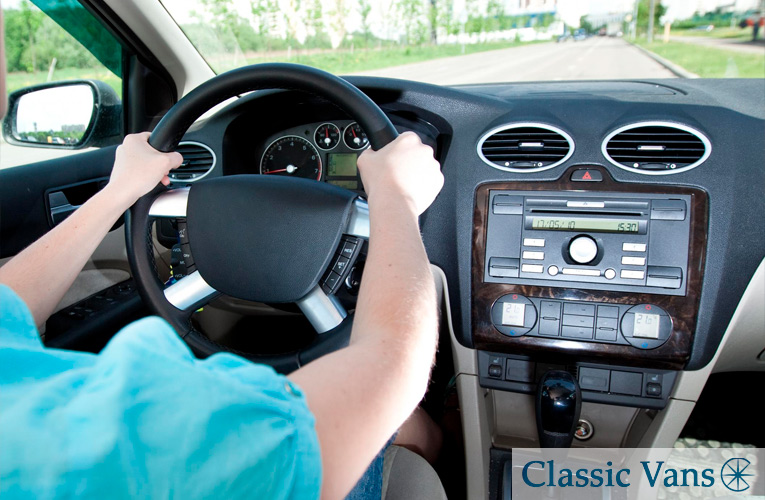Learn about how a CDRS can help you safely drive your mobility vehicle after a debilitating accident
One of the most difficult things about living with a disability is loss of freedom and independence. Driving, in particular, can be a challenging task for certain individuals.
Fortunately, in addition to new and used mobility vans that make driving easier and attainable for individuals with disabilities, there are specialists available who can help their patients get behind the wheel again and regain their independence.
These experts are known as a CDRS or DRS.
What is a CDRS?
A Certified Driving Rehabilitation Specialist (CDRS®) is a trained practitioner who specializes in assisting those who have a physically debilitating condition or have suffered a catastrophic event leaving them requiring physical assistance to safely drive an automobile.
A CDRS—or simply DRS (“Driving Rehabilitation Specialist”)—is an affiliated occupational therapist, meaning they combine medical knowledge about certain types of disabilities with how the condition affects one’s driving ability and transportation independence. A CDRS is trained by medical professionals to provide assessments and evaluations of an individual’s driving, and they are able to develop tailored programs to help a driver get back on the road regardless of the disability or handicap they live with.
Why is a CDRS important?
The main goal of a driving rehabilitation specialist is to provide individuals with the skills and resources they need to safely drive on the road. Mobility vehicles can be purchased Classic Vans and other auto dealerships that specialize in installing equipment that allows those with disabilities to be transported or drive a vehicle. However, many dealerships don’t have the medical knowledge needed to know if a driver with mobility restrictions is purchasing the right vehicle to meet their needs.
CDRS and DRS workers are trained to understand the impact that a disability can have on an individual’s reflexes, cognition and vision in order to respond quickly enough while driving on the road. Essentially, CDRS and DRS professionals make sure that drivers have the ability to make safe decisions while driving, keeping them and the public safe.
Types of services a CDRS provide
Here’s a simple list of services a CDRS and DRS expert are trained to offer:
- Apply medical information and conditions to the implications of driving
- Provide assistance to clients and caregivers in regards to mobility assistance equipment
- Provide assistance to clients and caregivers in regards to vehicle modifications to fit accordingly with mobility needs
- Work with clients to evaluate the visual, cognitive, perceptual, physical and behavioral needs of the individual in regards to its impact on safely driving
- Work in coordination with the patient’s medical team, mobility-modified vehicle provider, Department of Motor Vehicles guidelines, and caregivers to assist in helping the individual safely drive
- Supply resources in regards to funding for mobility vehicle modifications, necessary equipment and driver education programs
- Provide on-the-road assessment of mobility-impaired drivers
- Provide education and rehabilitation services to mobility-impaired drivers
The difference between a CDRS and a DRS?
A CDRS has a special certification that ensures they’ve met all criteria to evaluate and implement curriculum to help train drivers with disabilities to safely operate a motor vehicle. DRS are skilled professionals working with mental health workers to help provide similar services as a CDRS.
However a DRS only has some education towards their certification, while a CDRS has completed all required coursework and examinations. CDRS is the gold standard in driving assistance professionals for those with a physical impairment.
How to get a referral for a CDRS?
Doctors, occupational therapists, optometrists, specialists, driving education programs as well as individuals and family members can make referrals for a CDRS evaluation and program.
Disabilities are numerous and can be very mild to severe. Some of the following disabilities may require work with a CDRS:
- Amputations that impair movement
- Cerebral palsy
- Cerebellar ataxia
- Multiple sclerosis
- Stroke
- Spinal cord injury
- Parkinson’s disease
- Sensory impairments
- Poor vision
- Hearing loss/deafism
In addition, the following cognitive disorders may require CDRS work:
- Traumatic brain injury (TBI)
- Down syndrome
- Anxiety (severe)
- Dementia
- Autism spectrum
What does working with a CDRS look like?
After your initial assessment is completed, a CDRS will decide what level and type of support you need in order to stay safe behind the wheel. One-on-one training, conducted by a CDRS specialist, can help you understand the nuances of driving with your condition.
Courses are also often offered by a CDRS to help you gain the skills you need to drive safely and successfully.
How to pay for a CDRS?
While private insurance companies don’t always pay for CDRS programs, some percentage may be reimbursable by insurance providers depending on medical necessity. You may have to pay out-of-pocket for some of your program costs; however, keeping a loved one safe on the road is well worth it.
Find the best mobility van for your loved one
Driving safely and comfortably is a top priority when getting back on the road, which is why purchasing a dependable mobility vehicle that meets your specific needs is important.
Classic Vans is the San Francisco Bay area’s premier dealer of full-size wheelchair vans, mobility minivans, and many other new and used conversion vehicles. For over 30 years, we’ve been a family owned and operated small business. Continue browsing our website to find a vehicle that fits your needs. Finance options available.
Don’t live in California? No problem. Ask about our nationwide low-cost van delivery.
